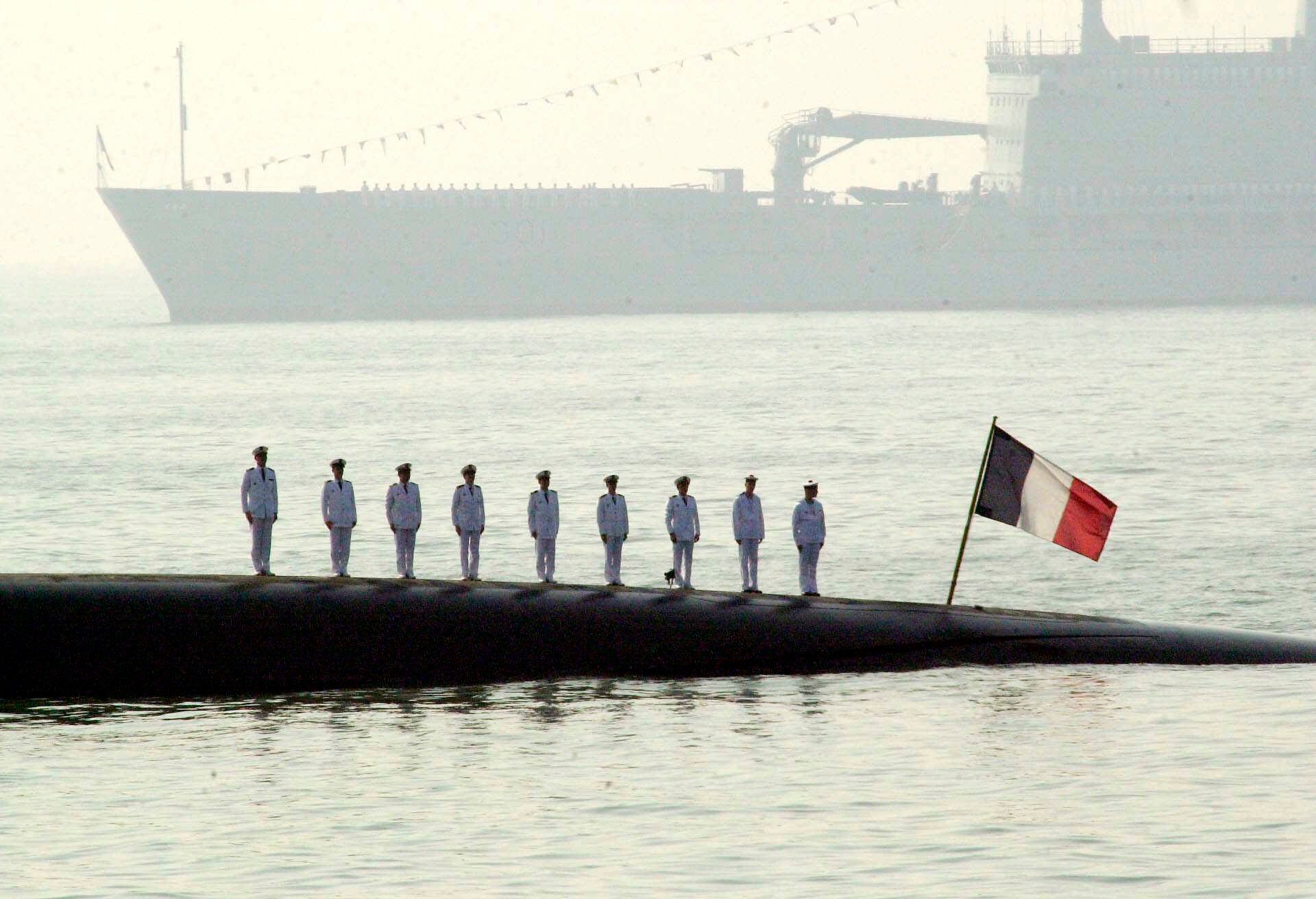The second administration of US President Donald Trump has brought about tectonic shifts in the European security calculus. Growing anxieties about American retrenchment and the collapse of post-World War II security arrangements have sent European leaders scrambling to put forward alternatives.
Ahead of the German elections last month, Friedrich Merz, the head of the Christian Democratic Union, who was already expected to become the next German chancellor, opined: “We need to have discussions with both the British and the French – the two European nuclear powers – about whether nuclear sharing, or at least nuclear security from the UK and France, could also apply to us”.
Last week, French President Emmanuel Macron said that in response to Merz, he has decided to “open the strategic debate on the protection of our allies on the European continent through our]nuclear] deterrence”.
The proposal for some form of European nuclear sharing arrangement with France and the United Kingdom to protect against threats from Moscow is not new. Versions of it have been floated around for decades.
But today, resurfacing this proposal is not just a geopolitical miscalculation, it is a strategic dead end. It reflects a misreading of both the nuclear balance of power and the existential risks of fragmenting Europe’s security architecture further. Rather than bolstering deterrence, this gambit risks accelerating the very instability it seeks to avert.
Amid the growing unpredictability of United States-Russia relations under the second Trump administration, Europe must pivot from nuclear escapism to a bold agenda of diplomatic engagement on nuclear disarmament.
The fantasy of European nuclear sharing
The proposal for European nuclear sharing founders on arithmetic and strategic reality. Russia’s nuclear arsenal boasts 5, 580 warheads, including hypersonic Avangard glide vehicles and Sarmat intercontinental ballistic missiles (ICBMs). This dwarfs the combined Anglo-French stockpile of 515 warheads.
This asymmetry isn’t merely quantitative, it is also doctrinal. Moscow’s “escalate to de-escalate” strategy represents a calculated approach to conflict escalation designed to coerce adversaries into concessions. It is a strategy the British and French nuclear arsenals, optimised for minimal deterrence, cannot counter.
Data on defence spending reveals a deeper flaw: Europeans do not have the funds or the technological capabilities to carry it out while executing their ambitious rearmament plans.
Germany’s 90.6-billion euro ($98bn) military budget remains crippled by inefficiencies, with only 50 percent of army equipment meeting NATO readiness standards. Meanwhile, France and the UK lack the conventional force multipliers – global surveillance networks, intelligence capabilities, or even complete nuclear triads – that underpin US extended deterrence. Even if every euro cent of the European Union’s recently announced 800 billion-euro ($867 billion) defence boost were spent on nuclear weapons programmes, cold-starting the sort of production complexes required for a credible deterrent would still take decades.
Attempting to replicate NATO’s nuclear-coalition model at a European level ignores six decades of integrated command structures and fails to address hybrid threats now defining modern conflict.
What is more, replacing one dependency with another solves nothing. Proponents claim nuclear sharing offers protection, but the reality is that it can lead to strategic subjugation.
Neither France nor the UK is likely to give up control over its nuclear arsenals and transfer it to the EU. That means that a nuclear-sharing agreement would reduce Germany and other European countries participating in the arrangement to Franco-British warhead warehouses with no real agency. This Potemkin deterrence—all ceremony, no substance—would only further irritate Washington.
Trump has already shown that he has no qualms about abandoning allies if he sees no benefit for the US strategic interest. His recent moves to stop intelligence sharing and military aid for Ukraine and his conditioning mutual defence on military spending have exposed NATO’s fraying norms – the alliance is witnessing a collapse of shared purpose.
As experts note, Trump’s “MAGA Carta” foreign policy explicitly rejects strategic altruism. A European nuclear caucus would signal panic, validating Trump’s transactional world view while undermining NATO’s cohesion.
A European nuclear club would deepen fragmentation, emboldening revisionist actors like Russia and China while diverting resources from critical gaps in AI advancement, sustainable economic output, and energy resilience that define 21st-century power.
The economic argument compounds the folly. Pouring billions of euros from Europe’s finite resources into redundant warheads while neglecting practical gaps in conventional capability isn’t statecraft—it’s generational malpractice.
Disarmament and fiscal realpolitik
The EU’s opportunity lies not in nuclear posturing, but in revitalising arms control and mediation. The collapse of the US-Russia strategic dialogue since the invasion of Ukraine has left critical arms control frameworks in disarray.
The New START treaty, which limits deployed strategic nuclear warheads to 1, 550 each for Russia and the US, remains the last pillar of bilateral arms control. Its expiration in 2026 without a successor would mark the first time since 1972 that the world’s nuclear superpowers operate without mutually verified limits—a scenario that could trigger a new nuclear arms race.
Herein lies Europe’s opportunity. Rather than pursuing a European nuclear umbrella, it could lead efforts to revive nuclear disarmament dialogue.
Austria, an EU member, has already played a key role in nuclear talks between the West and Iran as well as the 2020 US-Russia-China trilateral arms control discussions. This positions it as an ideal venue for restarting negotiations on nuclear risk reduction issues, especially at a time when Washington is open to renewed dialogue with Moscow.
Taking a lead on nuclear disarmament would be the sort of leadership that would reflect a more mature interpretation of security policy, as opposed to seeking an impossible nuclear deterrence.
Some critics maintain that negotiating with Russia rewards aggression. Yet history shows even bitter adversaries can cooperate on arms control when interests align. The 1987 Intermediate-Range Nuclear Forces Treaty, which eliminated 2, 692 missiles, was finalised after years of heightened tensions between the USSR and the US in the early 1980s.
The treaty succeeded not because US President Ronald Reagan and Soviet leader Mikhail Gorbachev trusted each other, but because dismantling missiles saved both sides a significant amount of funds that would have gone into continuing the arms race and maintaining the destroyed ordinance.
Today, with Russia’s economy faltering amid the war in Ukraine and Trump’s fixation with cost-cutting, there is an opportunity to pursue another deal if disarmament is framed not as idealism, but as fiscal pragmatism. Europe can help broker a deal that serves all parties ‘ wallets—and humanity’s survival.
The unintended consequences of Trump’s first-term nuclear gambits – escalated arms racing, eroded alliances, and emboldened adversaries – offer cautionary lessons. His second term, however, can offer an opportunity to shift the Doomsday Clock back from its position of 89 seconds to midnight.
Europe now faces a choice: to cling to Cold War relics while the planet burns, or to pioneer a security paradigm prioritising planetary survival over great-power vanity. The decision it makes will define not just Europe’s future—but all of humanity’s.
 BBC Newsnight
BBC Newsnight









